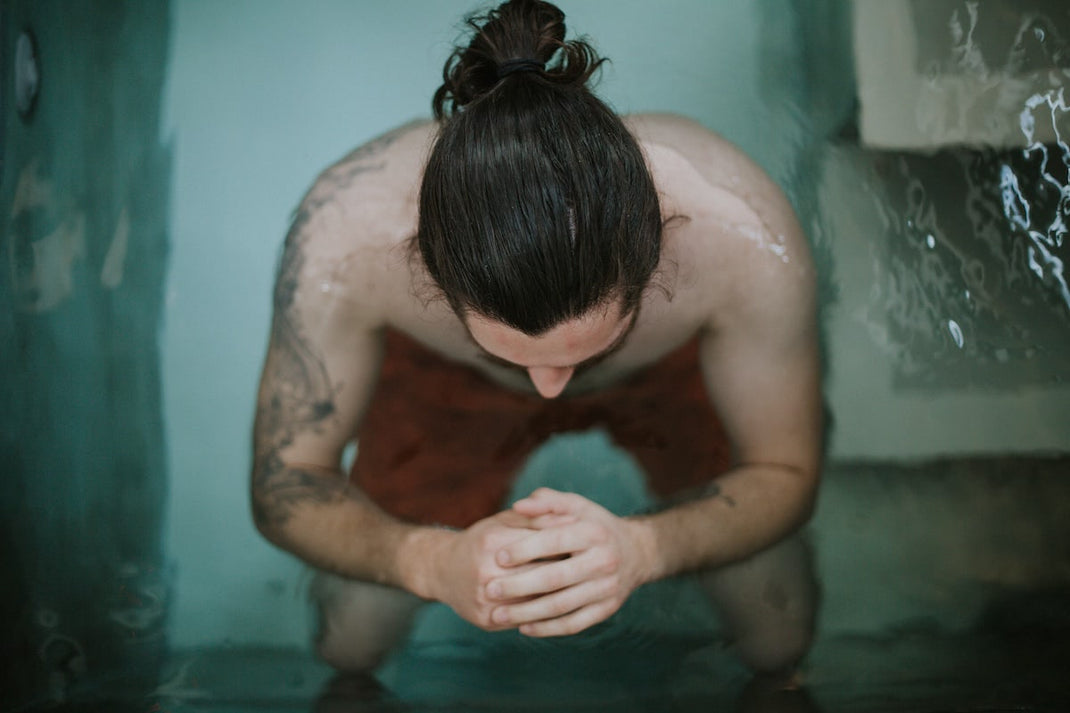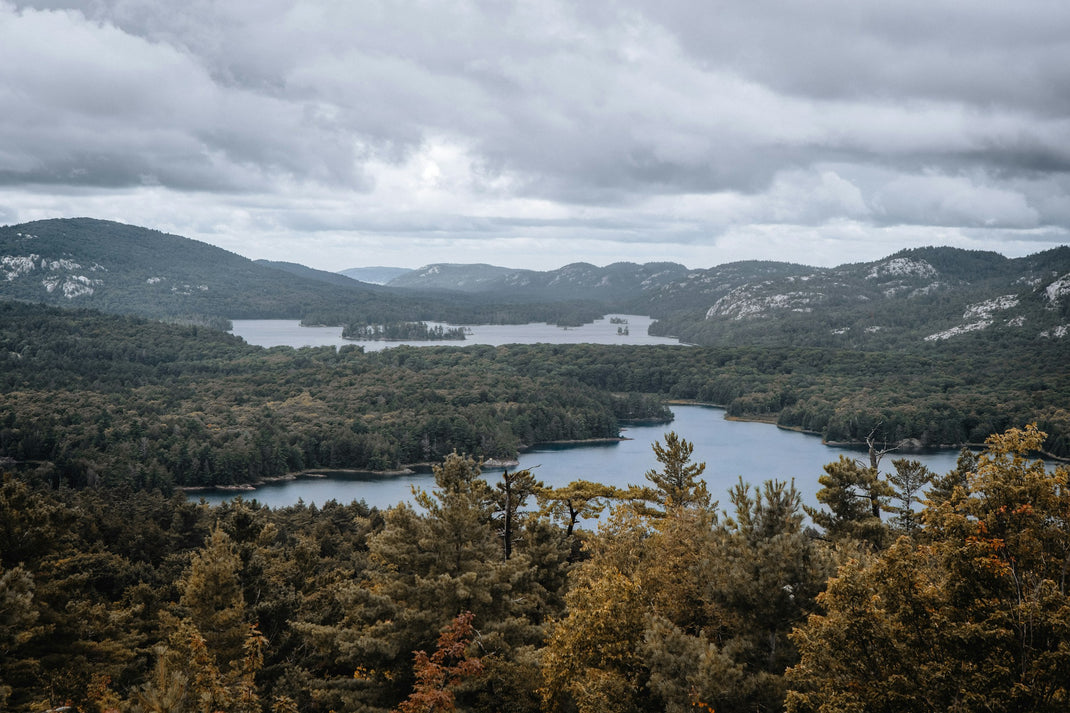How Long and How Often Should You Cold Plunge?
8 Min Read / Dr. Christine KrallExhilarating whoops, hollers, and gasps can be heard from people polar plunging into icy lakes, or even stepping into the cold plunge tub. It’s most people’s primal instinct to immediately exit ice cold water once getting in. But if you resist the urge to get out, there are benefits to cold plunging a bit longer. The question is how long do you have to cold plunge to achieve those benefits?
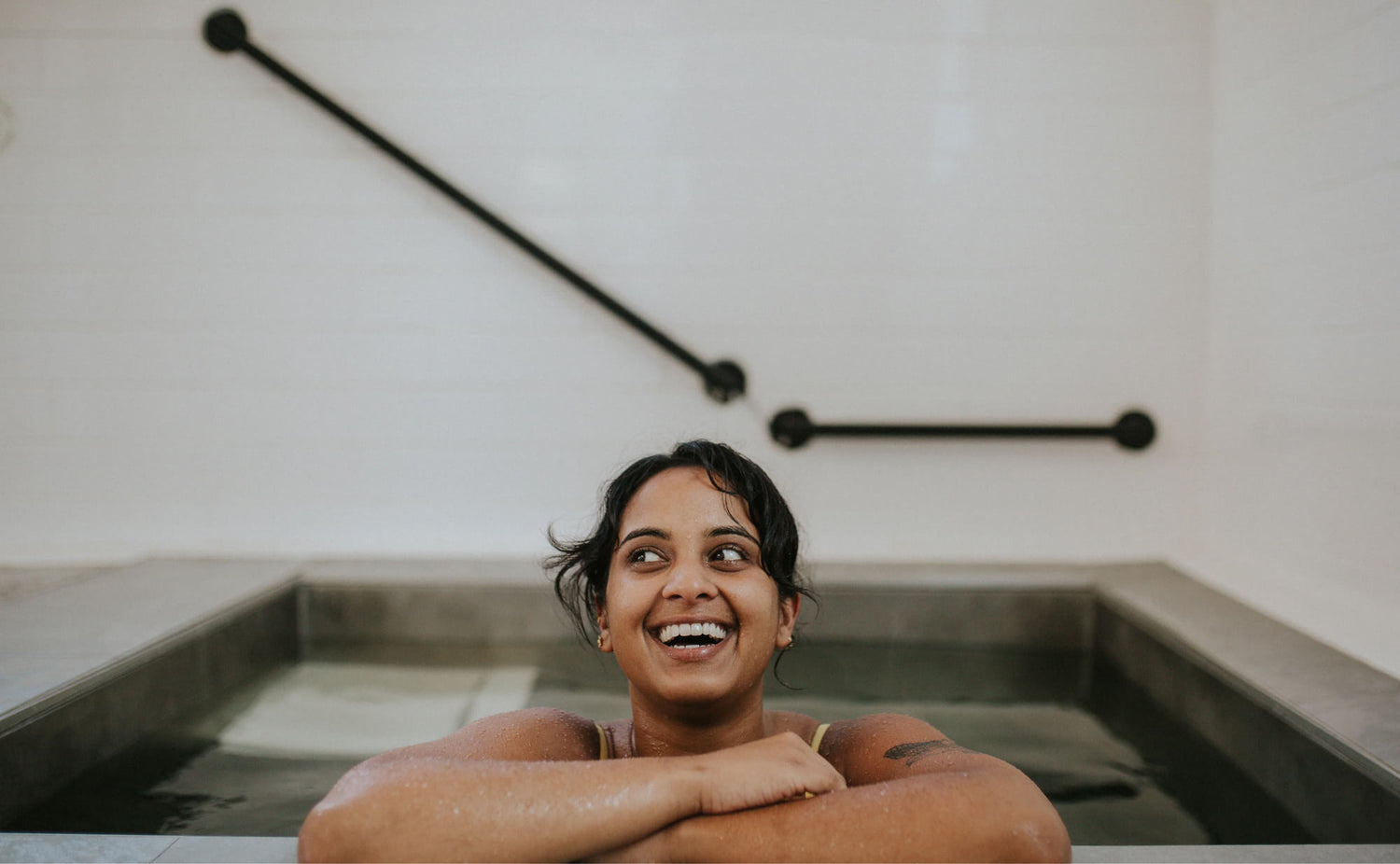
The science is clear, and many people will vouch for this: cold plunging is *fantastic* for your health.
We've talked about this: from an immunity boost to better mental health, there's a lot to gain from staying a few extra minutes in cold water.
But how many minutes, exactly?
While we would *love* to have a straight answer for this, there really isn't an ideal amount of time to stay in the water to reap the full benefits of cold water therapy.
Everybody is different. However, there are factors that can help you decide for yourself. Before we get into them, let's get an idea of how cold water therapy works.
Understanding Cold Plunge Therapy
When your body suddenly meets cold temperatures, receptors close to the skin's surface alert to the change, shocking your sympathetic nervous system. This initial shock triggers a release of hormones such as adrenaline and noradrenaline. Cue constricted blood vessels, rapid breathing, increased heart rate, and elevated blood pressure. This is your body in survival mode. It redistributes blood flow from your extremities to concentrate around essential organs like your heart and lungs, conserving heat to keep its systems functioning properly.
How Long Should You Stay In The Cold Plunge?
Now that you know how cold plunging affects you, consider these when deciding how long to stay in the water:
- Adaptation to cold: How comfortable are you with low temperatures? If you're a greenhorn, start with no more than 30 seconds. Increase the duration as your tolerance improves. It's a good idea to start with cold showers and baths and then work your way up.
- Body type: Your size and body fat composition make a difference. Larger, more muscular people may retain heat better and enjoy longer durations than smaller-framed people.
- Water temperature: The colder the water, the shorter the time needed. It’s generally safe to stay in this temperature longer compared to freezing water.
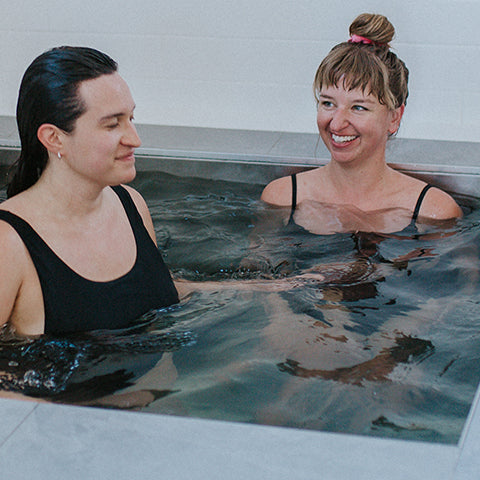
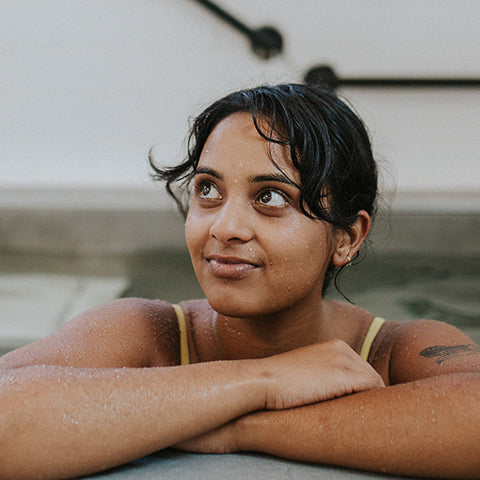
Cold Plunge Temperature and Time for Different Goals
In the past, we have discussed how long to stay in the sauna, which has a number of proven benefits. It turns out that cold water immersion has benefits too. Knowing the minimum effective dose is important – if you can master that, you’ll reap the benefits. You can continue beyond that, but the metabolic benefits plateau. However, resiliency builds over time, since staying in cold water takes commitment and mental strength.
Water temperature influences how long you should stay in – the colder the water, a shorter amount of time is needed. Sauna house sets the cold plunge pool to 11.7 ℃/ 53 ℉ which is chilly, but tolerable, and can produce benefits. It’s generally safe to stay in this temperature longer, compared to freezing water.
Cold Plunge for Improved Metabolism
In an interview on the Huberman Lab Podcast, researcher Dr. Susanna Soberg tells us that precisely 11 minutes of cold exposure in divided sessions per week is enough to get the metabolic benefits of brown fat activation. This could amount to 1-5 minutes of cold therapy 2-4 times a week. In her study, winter water temperature ranged from 1-9 ℃ (34 - 48 ℉), but participants also swim year round in slightly warmer water temperatures [1].
We’ve written about the Soberg Principle – which is to end with cold, which forces your body to reheat on its own. This should induce shivering which is key for boosting your metabolism by helping your body generate heat. Cold exposure also helps white fat turn to brown fat (explained in this article). This transformation of body adipose (fat) can be protective against diabetes, heart disease, and obesity [2].
Cold Plunge for Better Mood and Focus
A few studies have shown that cold water immersion leads to a significant increase in positive mood and less distress. One study showed immersion in 13.6 ℃ (57 ℉) water for up to 20 minutes achieved these benefits [3]. Another study had participants in just one 5-minute cool water immersion at 20 ℃ (68 ℉) – which is not that cold [4]. This shows that the minimum effective dose to get the good mood benefits doesn’t have to be super long or cold.
Cold triggers the chemicals dopamine, serotonin, cortisol, norepinephrine, and beta-endorphins which influence mood, focus, and attention [4]. A study on people in cool 14 ℃ (57 ℉) water for an hour up to their neck showed increased dopamine up to 250% and norepinephrine release up to 530% [5]. Don’t have an hour? Colder, shorter immersions still pack a punch – just 2 minutes at 10 ℃ (50 ℉) or 20 seconds at 0-2 ℃ (32-35.6 ℉) doubles norepinephrine levels [6,7].
Cold Plunge for Muscle Soreness
Cold water immersion reduces muscle damage, swelling, inflammation, spasm, and pain. A common protocol among studies is 11-15 ℃ (52-59 ℉) for 11-15 minutes divided into sets, although there’s success with as little as 5 minutes [8,9,10]. Dr. Andrew Huberman’s newsletter suggests that shorter intervals lasting less than 5 minutes can help with physical recovery after high-intensity exercise or endurance training. But timing is important because while it can help decrease muscle soreness, it can also negate muscle building and endurance benefits if done immediately after exercise.
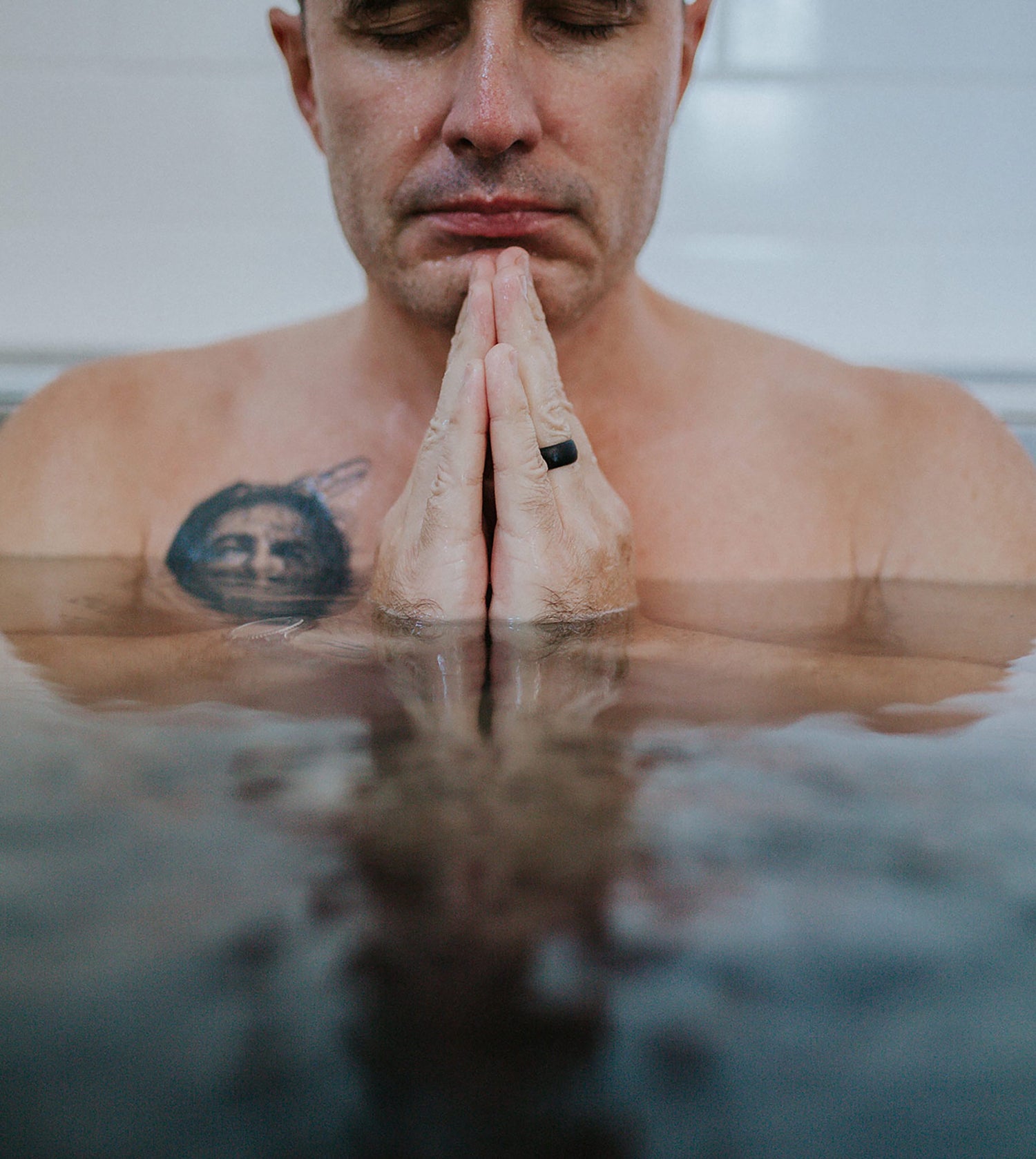
Establishing Baseline Tolerance
Baseline tolerance is the level of cold exposure your body can comfortably handle without causing excessive stress or negative effects.
Tips for Establishing Your Baseline Tolerance:
- Start with cold showers: Begin by exposing yourself to cold water at the end of a warm shower. Start with 15-30 seconds of cold water exposure and gradually increase the duration as you adapt. Try this 2-3 times a week. As you get more comfortable, you can increase the frequency or duration, and even try a cold bath.
- Gradual immersion: Instead of jumping into a full cold plunge, start by splashing the back of your neck with cold water. Then slowly submerge your feet, hands, or face in the cold plunge pool. This will help you acclimate to the sensation without overwhelming your body.
- Pay attention to discomfort: Mild discomfort is normal, but if there's intense shivering, numbness, dizziness, exit the water immediately. These are signs of hypothermia. After leaving the cold water, warm up with light movement, warm clothing, and if necessary, a warm drink. Avoid hot showers immediately after. They can cause rapid temperature changes and stress.
- Set Realistic Goals Time Goals: Set small, achievable goals for time spent in cold water. Target a 15-30 second weekly time increase, then cautiously shift to colder temperatures.
How To Cold Plunge Longer
If you’re looking to improve your cold plunge practice, check out these tips:
- Pro Tip: Stay Still. According to Dr. Craig Heller, if you get into the cold plunge and stay still and make sure the water stays still, you’ll feel warmer and not lose as much heat as moving around. So if your goal is to try and stay in the cold plunge as long as possible, try this out and let us know how it worked for you. If you’re trying to gain cold water benefits or challenge yourself more, it’s good to move your hands and feet, even though it'll make the experience a bit more uncomfortable.
- Regulated Breathing. We encourage readers to review this 2022 study entitled “The positive effects of combined breathing techniques and cold exposure on perceived stress: a randomised trial” [11]. The study evaluates breathing techniques that have recently grown in popularity. You can regulate your breathing once you get in the water by trying to slow down and deepen your breaths. It’s natural for us to hyperventilate when we hit the cold water, with short, shallow breaths and an increased breathing rate [12]. Focusing on breathing can help the body and mind remain calm in an uncomfortable physical state [11].
- Mind Over Matter. Similar to other mind-body disciplines like martial arts, cold exposure can be a practice in mindfulness. Dr. Soberg says on her Instagram channel, “I never liked the cold. But during my scientific journey I learned that cold water is a source of healthy stress. I still don’t love the cold. But then… that’s exactly how it should work. Accepting the uncomfortable. Coping with the cold. Getting more resilient to stress.” With practice, your thoughts can help you overcome the discomfort. As you enter the cold water, it may be as simple as having a mantra you repeat saying, “I’m okay”.
- Start Slow. Gradually build your time in the cold plunge. Maybe you only get in halfway up to your waist to begin with and eventually work up to your shoulders. Gradual cold exposures over time help your body become cold-adapted. As your body adapts, you’ll be able to beat your own personal records. It does get easier.
What Happens if You Cold Plunge Too Long?
Unless you’re Wim Hof, who holds multiple world records for staying in an ice bath for almost 2 hours, you’re probably not adapted to staying in the cold water that long [13].
Hypothermia is a risk, especially in older folks [2]. The medical definition is when the core body temperature drops below 35 ℃ (95 ℉). The amount of time to develop hypothermia varies from person to person and depending on water temperature, so it’s important to know the signs. In general, it takes around 30 minutes in freezing 0 ℃ (32 ℉) water for the signs of hypothermia to set in [12].
People with heart problems should check with their cardiologist before taking the plunge due to arrhythmias and other cardiac abnormalities from the shock of the cold water [12]. Even a brief dip in the cold can be risky, so we always caution people with serious health conditions to check with their healthcare provider before trying the sauna and cold plunge.
Doing the Math
Sauna House’s Hot-Cold-Relax regimen encourages up to 3 minutes of cold water immersion with each cycle, repeated 3 times. That could amount to anywhere from a few seconds to 9 minutes of cold plunge time each session. The minimum effective dose that will achieve all the health benefits is around 11 minutes each week. So a minimum of 2 weekly visits to Sauna House could technically satisfy those goals. Beyond that, the choice is yours – if you’re looking to challenge yourself to build resilience, try staying in longer.
Ready to take the plunge at Sauna House? Make a booking here, and check out our Asheville, Durham, Charlotte, Bonita Springs and other up-coming locations.

This blog post was researched, edited and written by Dr. Christine Krall, Naturopathic Doctor (ND)
Dr. Christine Krall received her Doctorate of Naturopathic Medicine from Bastyr University in Kenmore, WA. She completed a 3-year Family Practice & Oncology Residency at Yellowstone Naturopathic Clinic and Frontier Cancer Center in Billings, MT. Dr. Krall spent a decade providing test interpretation and educational support to practitioners at Genova Diagnostics, a functional medicine laboratory in Asheville, NC. Dr. Krall continues to use her 20 years of writing experience to communicate the benefits of natural medicine.
Experience the rush of the cold plunge at Sauna House
Book NowSources Cited
1. Kunutsor SK, Laukkanen JA. Does the Combination of Finnish Sauna Bathing and Other Lifestyle Factors Confer Additional Health Benefits? A Review of the Evidence. Mayo Clin Proc. 2023;98(6):915-926.
2. Henderson KN, Killen LG, O'Neal EK, Waldman HS. The Cardiometabolic Health Benefits of Sauna Exposure in Individuals with High-Stress Occupations. A Mechanistic Review. International journal of environmental research and public health. 2021;18(3).
3. Dinh QN, Drummond GR, Sobey CG, Chrissobolis S. Roles of inflammation, oxidative stress, and vascular dysfunction in hypertension. BioMed research international. 2014;2014:406960.
4. Lee E, Kolunsarka I, Kostensalo J, et al. Effects of regular sauna bathing in conjunction with exercise on cardiovascular function: a multi-arm, randomized controlled trial. American journal of physiology Regulatory, integrative and comparative physiology. 2022;323(3):R289-r299.
5. Esperland D, de Weerd L, Mercer JB. Health effects of voluntary exposure to cold water - a continuing subject of debate. International journal of circumpolar health. 2022;81(1):2111789
6. Versteeg N, Clijsen R, Hohenauer E. Effects of 3-week repeated cold water immersion on leukocyte counts and cardiovascular factors: an exploratory study. Frontiers in physiology. 2023;14:1197585.
7. Imai Y, Nobuoka S, Nagashima J, et al. Acute myocardial infarction induced by alternating exposure to heat in a sauna and rapid cooling in cold water. Cardiology. 1998;90(4):299-301.
8. Radtke T, Poerschke D, Wilhelm M, et al. Acute effects of Finnish sauna and cold-water immersion on haemodynamic variables and autonomic nervous system activity in patients with heart failure. European journal of preventive cardiology. 2016;23(6):593-601.
9. Sorokina EI, Iachmenev NV, Goncharova OI. [The effect of contrast baths on physical work capacity and autonomic regulation in hypertension patients]. Voprosy kurortologii, fizioterapii, i lechebnoi fizicheskoi kultury. 1994(5):4-7.
10. Watso JC, Farquhar WB. Hydration Status and Cardiovascular Function. Nutrients. 2019;11(8).
11. Laukkanen JA, Laukkanen T, Kunutsor SK. Cardiovascular and Other Health Benefits of Sauna Bathing: A Review of the Evidence. Mayo Clin Proc. 2018;93(8):1111-1121.
#ShareASale
1. Kunutsor SK, Laukkanen JA. Does the Combination of Finnish Sauna Bathing and Other Lifestyle Factors Confer Additional Health Benefits? A Review of the Evidence. Mayo Clin Proc. 2023;98(6):915-926.
2. Henderson KN, Killen LG, O'Neal EK, Waldman HS. The Cardiometabolic Health Benefits of Sauna Exposure in Individuals with High-Stress Occupations. A Mechanistic Review. International journal of environmental research and public health. 2021;18(3).
3. Dinh QN, Drummond GR, Sobey CG, Chrissobolis S. Roles of inflammation, oxidative stress, and vascular dysfunction in hypertension. BioMed research international. 2014;2014:406960.
4. Lee E, Kolunsarka I, Kostensalo J, et al. Effects of regular sauna bathing in conjunction with exercise on cardiovascular function: a multi-arm, randomized controlled trial. American journal of physiology Regulatory, integrative and comparative physiology. 2022;323(3):R289-r299.
5. Esperland D, de Weerd L, Mercer JB. Health effects of vol...
See all sources
1. Kunutsor SK, Laukkanen JA. Does the Combination of Finnish Sauna Bathing and Other Lifestyle Factors Confer Additional Health Benefits? A Review of the Evidence. Mayo Clin Proc. 2023;98(6):915-926.
2. Henderson KN, Killen LG, O'Neal EK, Waldman HS. The Cardiometabolic Health Benefits of Sauna Exposure in Individuals with High-Stress Occupations. A Mechanistic Review. International journal of environmental research and public health. 2021;18(3).
3. Dinh QN, Drummond GR, Sobey CG, Chrissobolis S. Roles of inflammation, oxidative stress, and vascular dysfunction in hypertension. BioMed research international. 2014;2014:406960.
4. Lee E, Kolunsarka I, Kostensalo J, et al. Effects of regular sauna bathing in conjunction with exercise on cardiovascular function: a multi-arm, randomized controlled trial. American journal of physiology Regulatory, integrative and comparative physiology. 2022;323(3):R289-r299.
5. Esperland D, de Weerd L, Mercer JB. Health effects of voluntary exposure to cold water - a continuing subject of debate. International journal of circumpolar health. 2022;81(1):2111789
6. Versteeg N, Clijsen R, Hohenauer E. Effects of 3-week repeated cold water immersion on leukocyte counts and cardiovascular factors: an exploratory study. Frontiers in physiology. 2023;14:1197585.
7. Imai Y, Nobuoka S, Nagashima J, et al. Acute myocardial infarction induced by alternating exposure to heat in a sauna and rapid cooling in cold water. Cardiology. 1998;90(4):299-301.
8. Radtke T, Poerschke D, Wilhelm M, et al. Acute effects of Finnish sauna and cold-water immersion on haemodynamic variables and autonomic nervous system activity in patients with heart failure. European journal of preventive cardiology. 2016;23(6):593-601.
9. Sorokina EI, Iachmenev NV, Goncharova OI. [The effect of contrast baths on physical work capacity and autonomic regulation in hypertension patients]. Voprosy kurortologii, fizioterapii, i lechebnoi fizicheskoi kultury. 1994(5):4-7.
10. Watso JC, Farquhar WB. Hydration Status and Cardiovascular Function. Nutrients. 2019;11(8).
11. Laukkanen JA, Laukkanen T, Kunutsor SK. Cardiovascular and Other Health Benefits of Sauna Bathing: A Review of the Evidence. Mayo Clin Proc. 2018;93(8):1111-1121.
#ShareASale

